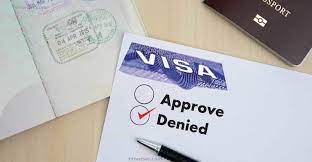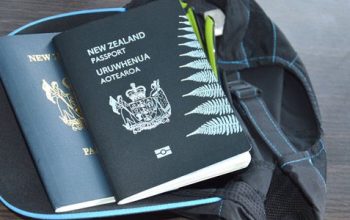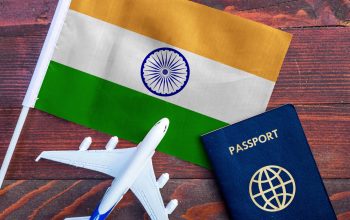Are you a UK national dreaming of exploring the vibrant and culturally rich land of India? Well, fret not! We have got your back. Navigating through the Indian visa application process can be overwhelming, but fear not – our comprehensive guide is here to make it a breeze for you. Whether you’re planning a spiritual journey to Varanasi or seeking adventure in the Himalayas, these top tips will ensure that your Indian visa application sails smoothly from start to finish. So, grab a cuppa and let’s delve into this essential information that will help turn your dream trip into reality! Indian Visa for UK Citizens
Introduction to the Indian Visa Application Process for UK Citizens
If you are a UK citizen planning to visit India, one of the first steps you need to take is to apply for an Indian visa. The process may seem daunting at first, but with proper guidance and preparation, it can be a smooth and successful experience.
In this section, we will provide you with an overview of the Indian visa application process specifically tailored for UK citizens. It is essential to note that the process may vary depending on your purpose of travel and type of visa required. Therefore, it is always advisable to check the official website of Indian visas for updated information.
Types of Visas Available for UK Citizens
Before starting your application process, it is crucial to determine which type of visa you need for your trip. As a UK citizen, you have various options available depending on the purpose and duration of your stay in India. Some common types include tourist visa, business visa, employment visa, student visa, medical visa, and e-visa.
The most popular among these is the e-visa or electronic travel authorization (ETA), which allows visitors from eligible countries (including the UK) to apply online without having to submit physical documents or visit an embassy/consulate. However, please note that e-visas are only valid for specific purposes such as tourism or short-term business trips. Indian Visa for British Citizens
Understanding the Different Types of Indian Visas for UK Nationals
As a UK national, understanding the different types of Indian visas available is crucial before starting your visa application process. This will not only help you determine which visa category is most suitable for your purpose of travel, but also ensure that you have all the necessary documents and meet the eligibility requirements.
1. Tourist Visa:
This type of visa is suitable for those who wish to visit India for tourism or leisure purposes such as sightseeing, attending cultural events, visiting friends or family, or participating in short-term courses. A tourist visa can be issued for a single entry (valid for 30 days) or multiple entries (valid for 1 year). It is important to note that this visa does not allow visitors to engage in any business activities or gain employment in India.
2. Business Visa:
If you are planning to visit India for business-related purposes such as attending meetings, conferences, trade fairs, etc., then a business visa is required. This type of visa can be issued for single or multiple entries and has a validity period ranging from 6 months to 10 years depending on the applicant’s nationality and purpose of travel.
3. Employment Visa:
UK nationals who intend to work in India must apply for an employment visa. This type of visa allows individuals to take up employment with an Indian company or organization and can be valid for up to 5 years with multiple entries permitted.
Top Tips for Filling Out Your Indian Visa Application Correctly
The Indian visa application process can be overwhelming and confusing, especially for UK nationals who are not familiar with the country’s requirements. However, with the right guidance and preparation, filling out your Indian visa application correctly can be a smooth and stress-free experience.
To help you navigate through this process, we have compiled some top tips for filling out your Indian visa application correctly:
1. Understand the different types of visas available: The first step in filling out your Indian visa application is to determine which type of visa you need. India offers a variety of visas such as tourist, business, medical, student, and employment visas. Each comes with its own set of requirements and documentation. Make sure you carefully read through the options and choose the one that best suits your purpose of travel.
2. Start early: It is crucial to start the application process well in advance to avoid any last-minute rush or delays. The processing time for an Indian visa could take anywhere from 3-10 working days depending on the type of visa you have applied for. Plan accordingly and submit your application at least a month before your intended travel date.
3. Fill out the form accurately: The Indian visa application form can be completed online or manually filled out in black ink only. Be sure to provide accurate information as any mistakes or discrepancies may lead to rejection or delay in processing your application.
4. Provide all required documents: Along with the completed form, certain supporting documents are also required for an Indian visa application.
Gather all required documents beforehand
When applying for an Indian visa as a UK national, it is important to gather all required documents beforehand to ensure a smooth and successful application process. Failing to submit the necessary documents can result in delays or even rejection of your visa application.
Here are some key documents that you will need to prepare before starting your Indian visa application:
1. Valid passport: Your passport must be valid for at least six months from the date of your intended arrival in India. It should also have at least two blank pages for the visa stamp.
2. Completed visa application form: Make sure all information provided is accurate and matches the details on your passport.
3. Recent passport-sized photographs: You will need to submit two recent color photographs with white background along with your application form.
4. Proof of residence: As a UK citizen, you will need to provide proof of residence such as a utility bill, bank statement or driving license.
5. Flight itinerary: You will be required to submit a copy of your flight itinerary showing your entry and exit dates from India.
6. Proof of financial means: In order to demonstrate that you are able to support yourself during your stay in India, you may be asked to provide proof of sufficient funds such as bank statements or pay slips.
Double check your information for accuracy and completeness
Double checking your information for accuracy and completeness is a crucial step in the Indian visa application process for UK nationals. Any mistakes or missing information can result in delays or even rejection of your application. Here are some tips to ensure that your application is error-free and complete:
1. Review all personal details: Start by reviewing all the personal details such as name, date of birth, passport number, and other relevant information on the application form. Make sure that they match exactly with the details on your passport.
2. Check visa category: It is important to select the correct visa category based on the purpose of your visit to India. If you are unsure about which category to choose, seek guidance from the Indian High Commission or consulate.
3. Verify supporting documents: The Indian visa application requires various supporting documents such as a valid passport, recent photographs, and proof of travel plans. Double check that you have included all the required documents and they are up-to-date.
4. Proofread carefully: Spelling mistakes or incorrect grammar can make your application appear unprofessional and lead to rejection. It is essential to proofread all sections of your application form before submitting it.
5. Ensure accurate dates: Make sure that all dates mentioned in your application form are accurate and consistent throughout, especially if you have multiple trips planned during different time periods.
6. Review employment information: If you are employed, double check that you have provided accurate information about your job title, company name and address, salary details, etc.



